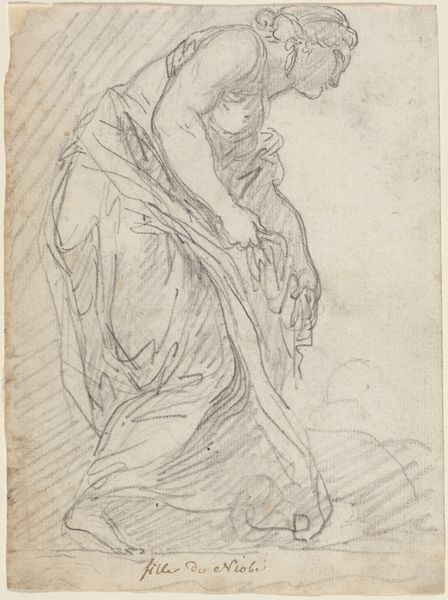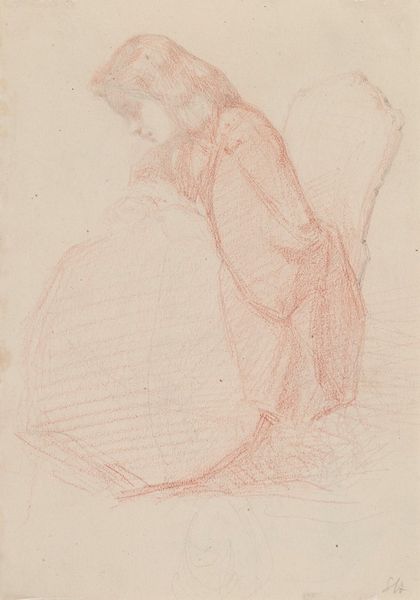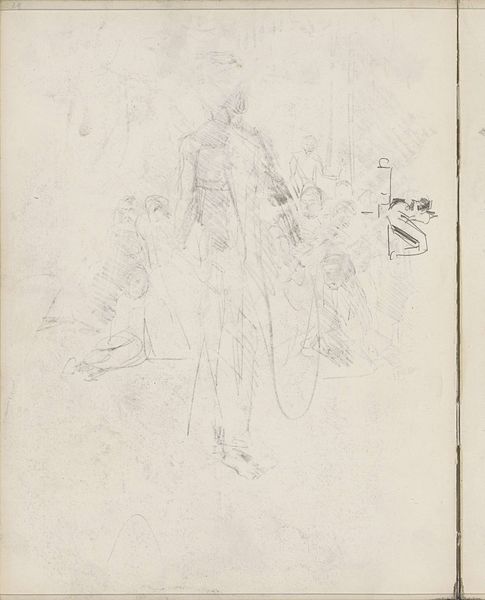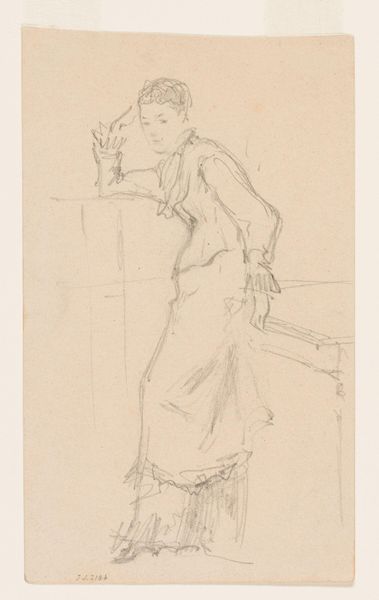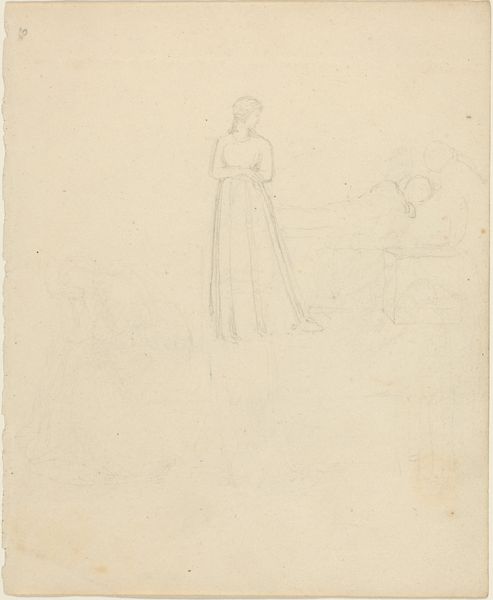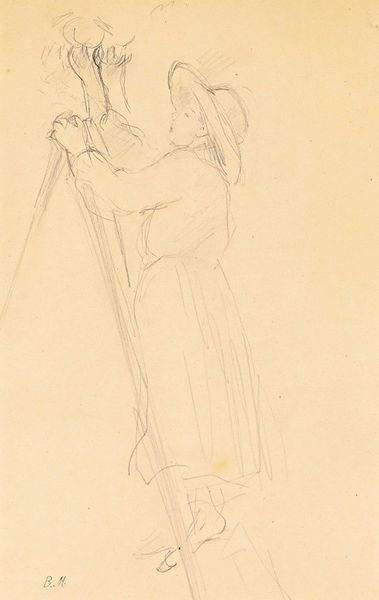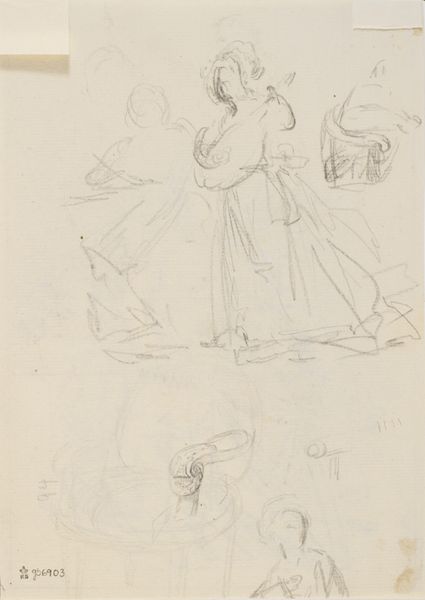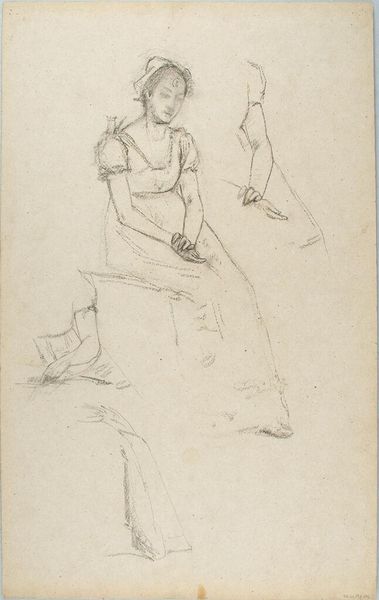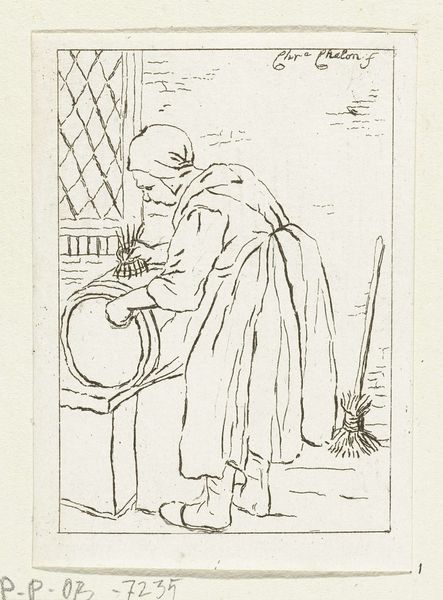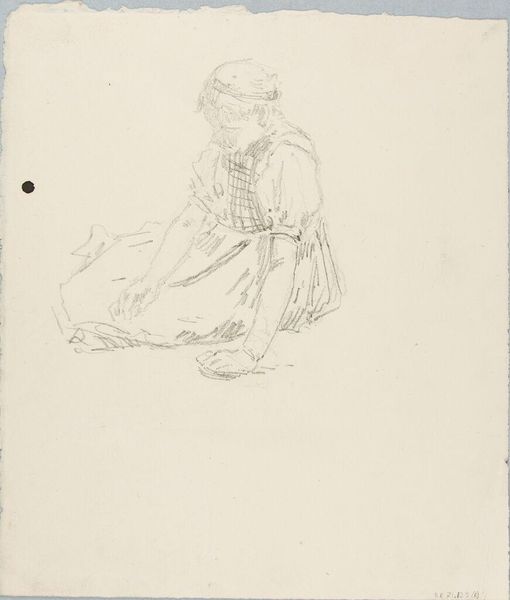
drawing, pencil
#
portrait
#
drawing
#
dutch-golden-age
#
pencil sketch
#
pencil
#
academic-art
#
realism
Dimensions: height 290 mm, width 190 mm
Copyright: Rijks Museum: Open Domain
Curator: This drawing, “Schets van een staande werkende figuur, van opzij,” roughly translates to "Sketch of a Standing Working Figure, from the Side." It was created by Jozef Israëls sometime between 1834 and 1911, and the piece is currently held here at the Rijksmuseum. It's a pencil sketch. Editor: It strikes me as a study of labor, but rendered with such delicacy. The spare lines and the figure’s bowed head convey a sense of weariness and dedication. Curator: Exactly. Israëls often focused on the lives of the working class and particularly those living in poverty. We see that commitment mirrored across artistic movements, like Realism, that emerged to represent everyday experiences more honestly in response to societal shifts during the industrial revolution. Editor: I appreciate how the drawing captures the subject’s humanity without idealizing or romanticizing their toil. There's an unvarnished realism that invites the viewer to empathize, to consider the social implications of such labor. What do you think about the unfinished quality? Is that typical? Curator: Quite so. It shows us Israëls' process, a glimpse behind the curtain of art making in the period. We see that it isn't intended as a finished work; it is academic art, focused on form, lighting, and proportion. Sketches like these played a crucial role in developing larger compositions within the artist's broader body of work. Editor: Seeing the ghosted impression of a second head also reinforces that sense of process. I’m left considering the choices involved in depicting labor, then and now, and what images we elevate within our cultural institutions. Who gets represented? Curator: A central question. Museums play a vital role in shaping the narrative, determining which stories are told and whose voices are amplified through artistic representation. Editor: Thinking about the context in which this sketch was created, it really encapsulates a moment of observing working-class realities and, perhaps, attempting to bridge a gap through visual storytelling. Curator: Yes, its understated aesthetic carries echoes of the broader debates about the role of art in society during a period of profound change. Editor: A subtle sketch can ignite important conversations. Thank you.
Comments
No comments
Be the first to comment and join the conversation on the ultimate creative platform.

